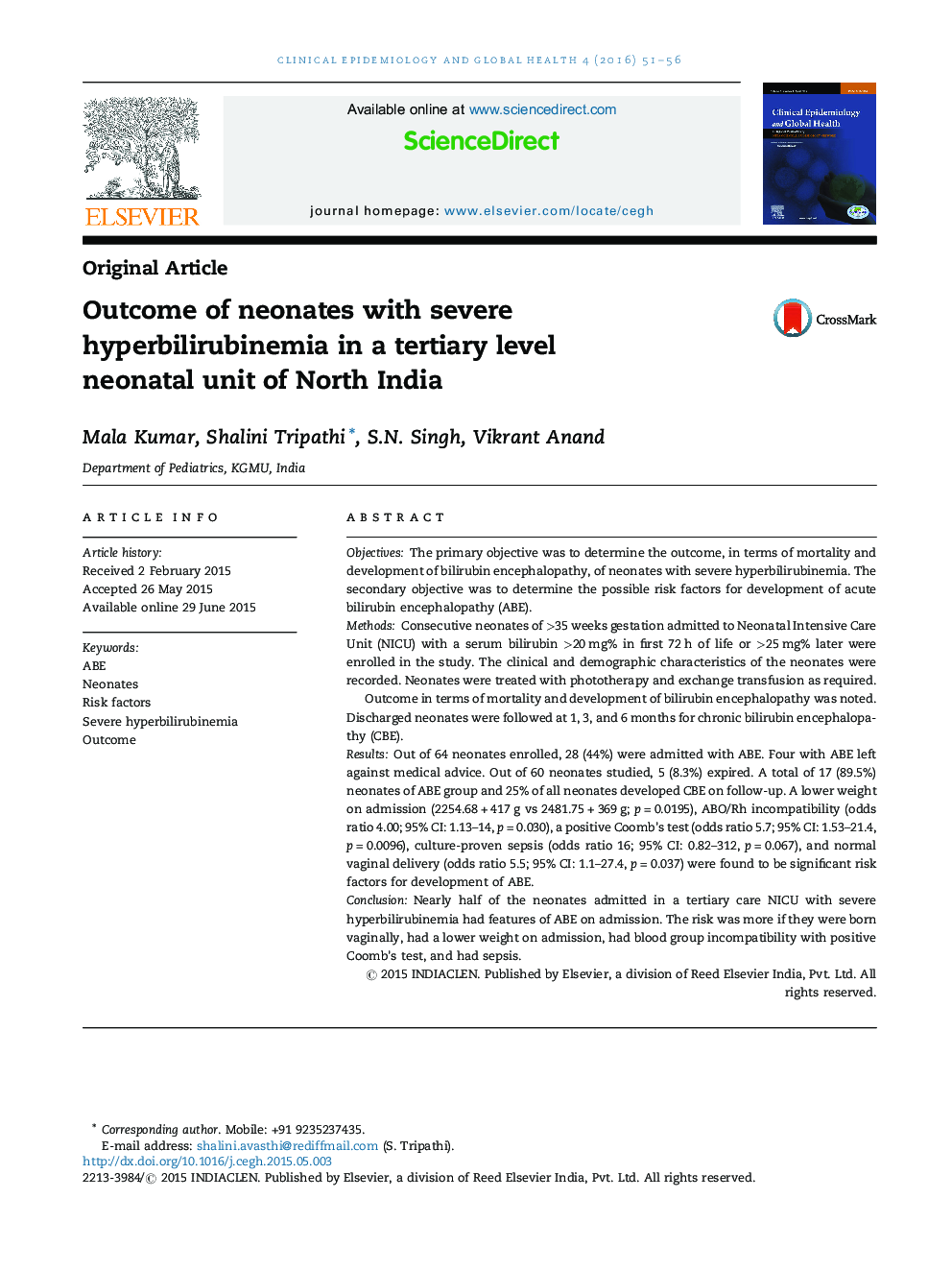| کد مقاله | کد نشریه | سال انتشار | مقاله انگلیسی | نسخه تمام متن |
|---|---|---|---|---|
| 3396222 | 1221912 | 2016 | 6 صفحه PDF | دانلود رایگان |
ObjectivesThe primary objective was to determine the outcome, in terms of mortality and development of bilirubin encephalopathy, of neonates with severe hyperbilirubinemia. The secondary objective was to determine the possible risk factors for development of acute bilirubin encephalopathy (ABE).MethodsConsecutive neonates of >35 weeks gestation admitted to Neonatal Intensive Care Unit (NICU) with a serum bilirubin >20 mg% in first 72 h of life or >25 mg% later were enrolled in the study. The clinical and demographic characteristics of the neonates were recorded. Neonates were treated with phototherapy and exchange transfusion as required.Outcome in terms of mortality and development of bilirubin encephalopathy was noted. Discharged neonates were followed at 1, 3, and 6 months for chronic bilirubin encephalopathy (CBE).ResultsOut of 64 neonates enrolled, 28 (44%) were admitted with ABE. Four with ABE left against medical advice. Out of 60 neonates studied, 5 (8.3%) expired. A total of 17 (89.5%) neonates of ABE group and 25% of all neonates developed CBE on follow-up. A lower weight on admission (2254.68 + 417 g vs 2481.75 + 369 g; p = 0.0195), ABO/Rh incompatibility (odds ratio 4.00; 95% CI: 1.13–14, p = 0.030), a positive Coomb's test (odds ratio 5.7; 95% CI: 1.53–21.4, p = 0.0096), culture-proven sepsis (odds ratio 16; 95% CI: 0.82–312, p = 0.067), and normal vaginal delivery (odds ratio 5.5; 95% CI: 1.1–27.4, p = 0.037) were found to be significant risk factors for development of ABE.ConclusionNearly half of the neonates admitted in a tertiary care NICU with severe hyperbilirubinemia had features of ABE on admission. The risk was more if they were born vaginally, had a lower weight on admission, had blood group incompatibility with positive Coomb's test, and had sepsis.
Journal: Clinical Epidemiology and Global Health - Volume 4, Issue 2, June 2016, Pages 51–56
